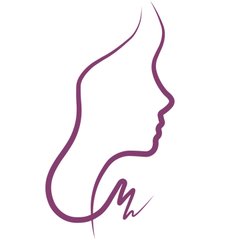
Achieving a Perfect Pout | If you have recently enhanced your smile with lip fillers, you are among those who value a little more volume and youthful glow. And, like many others who have transformed their looks, you’ll want to make sure the recovery process is smooth and easy.
Lip fillers have become a popular choice for those seeking plump, youthful lips without the need for surgery. While the results can be stunning, it’s essential to understand the recovery process to ensure a smooth and comfortable experience. Trusted experts and real success stories have shown that understanding the steps of recovery can make all the difference. With insights from industry experts, you’ll know what to expect and how to ensure a flawless recovery. Let’s explore the essential steps that have helped others achieve amazing results and keep the process smooth and stress-free.
Immediate Post-Injection: Immediate Swelling In the immediate moments following your lip filler injection, it’s not uncommon to experience a combination of redness, swelling, and minor bruising around the treated area. This initial reaction is a natural response to the introduction of the filler substance. To alleviate any discomfort and minimize swelling, the application of ice packs is highly recommended during this period. However, it’s crucial to exercise caution and avoid applying excessive pressure to the lips, ensuring a gentle and controlled approach.
The initial 24 to 48 hours post-injection mark a critical phase in the lip filler recovery timeline. Swelling tends to peak during this period, causing the lips to appear more voluminous than the final result. It’s crucial to be patient during this phase and avoid making judgments about the final outcome based on the initial swelling. To support the healing process and mitigate the risk of increased swelling, it is advisable to prioritize rest and avoid engaging in strenuous activities. Additionally, over-the-counter pain relievers such as acetaminophen can be utilized to manage any discomfort, providing relief during this initial phase.
As you progress into the second phase of recovery, spanning from days 2 to 7 post-treatment, you’ll observe a gradual subsiding of the swelling. This period is crucial for allowing the filler to settle, and you’ll begin to witness the true and natural results of your lip enhancement. It’s essential to be patient during this timeframe, as bruising may still be present, although it can be effectively concealed with the application of makeup, ensuring a flawless appearance.
By the end of the second week, you can expect significant improvements in the overall appearance of your lips. Most of the initial swelling and bruising should have substantially resolved, revealing a more settled and natural aesthetic. At this stage, your lips will begin to feel softer and more pliable, mirroring the final outcome of your lip filler treatment. As you embrace the subtle transformation, you’ll likely find that your enhanced lips seamlessly blend into your facial features, achieving the desired balance and harmony.
While lip fillers are generally considered safe and effective, like any cosmetic procedure, they may come with potential side effects.
Mild to moderate swelling and bruising around the injection site are common and typically temporary. It usually subsides within a few days to a week, depending on individual healing rates.
The injected area may appear red and feel tender immediately after the procedure. Redness and tenderness are generally short-lived, resolving within a day or two.
Occasionally, patients may experience uneven distribution of the filler or notice lumps under the skin. Lumps or unevenness can be massaged out or may resolve over time. In some cases, additional treatment may be required.
While rare, some individuals may be allergic to components of the filler or develop an immune response. Symptoms include itchy or swollen lips, hives, or more severe reactions in extreme cases. Allergic reactions may require prompt medical attention. Choosing a reputable practitioner and discussing any allergies beforehand is crucial.
Infections at the injection site are rare but can occur. Symptoms include persistent swelling, redness, and pain. Prompt medical attention is necessary if infection is suspected. Antibiotics may be prescribed.
Uneven results or asymmetry may occur, especially if the filler is not administered evenly. In some cases, asymmetry can be corrected with additional filler or adjustments during a follow-up appointment.
Temporary numbness or tingling at the injection site may occur due to the injection process. Typically resolves on its own within a short period.
Small, hard nodules called granulomas can form under the skin in response to the filler. Granulomas may require additional treatments, such as steroid injections or, in rare cases, surgical removal. It’s crucial to consult with a qualified and experienced practitioner who can thoroughly discuss potential side effects, address any concerns, and provide proper aftercare instructions.
While the majority of individuals experience a smooth recovery from lip filler procedures, there are instances when it is essential to seek medical attention. If you notice any of the following signs or symptoms after getting lip fillers, it is advisable to consult with your skincare professional promptly: - Severe or prolonged swelling that does not improve within the expected timeframe - Intense pain or discomfort beyond the usual tenderness may signal a problem. - Redness, warmth, and increasing tenderness around the injection site could be signs of an infection. - Allergic reactions, such as severe itching, widespread rash, swelling beyond the injected area, or difficulty breathing. - While mild lumps are normal initially, the presence of large, painful nodules or persistent lumps that do not resolve may require medical assessment. - Significant changes in skin color around the lips, such as pronounced bluish or blackish discoloration, may indicate compromised blood flow. - Difficulty speaking or eating or unusual tightness or asymmetry. - Extremely rare but serious complications can include filler inadvertently entering a blood vessel causing sudden vision changes, such as blurriness or loss of vision. Remember, it’s always better to err on the side of caution. If you have any concerns about your lip filler treatment or notice unexpected changes, contacting your provider ensures timely intervention and appropriate management.
Proper aftercare is crucial for a smooth and successful recovery following lip filler injections. Implementing the following aftercare essentials will help minimize potential side effects and contribute to optimal results: 1. Ice Packs: Apply ice packs to the treated area during the first 24 hours to reduce swelling. Use a clean cloth to prevent direct contact with the skin, and apply for 15-20 minutes at a time. 2. Avoiding Strenuous Activities: Rest and avoid vigorous physical activities, such as intense exercise, for at least 48 hours post-treatment. Elevated blood flow can exacerbate swelling and bruising. 3. Gentle Lip Massage: After the initial 24 hours, gently massage your lips to promote even distribution of the filler. Follow your practitioner’s guidance on the appropriate massage technique. 4. Hydration: Drink plenty of water to stay hydrated. Proper hydration supports overall skin health and aids in the recovery process. 5. Avoiding Blood Thinners: Refrain from consuming alcohol and avoid blood-thinning medications for a few days post-treatment. This helps minimize the risk of increased bruising. 6. Sun Protection: Shield your lips from direct sun exposure, especially during the first few days post-treatment. Use a lip balm with SPF to prevent damage and protect the delicate skin. 7. Avoiding Facial Manipulation: Avoid excessive facial movements, such as exaggerated smiling or excessive talking, immediately after the procedure. This minimizes stress on the injected area. 8. Over-the-Counter Pain Relievers: If you experience any discomfort, over-the-counter pain relievers such as acetaminophen can be used as directed to manage pain. Avoid aspirin and non-steroidal anti-inflammatory drugs (NSAIDs) as they can increase the risk of bruising. 9. Follow-Up Appointment: Attend any scheduled follow-up appointments with your practitioner. They can assess the results, address any concerns, and make any necessary adjustments. 10. Mindful Eating: Be mindful of your diet, especially in the first few days. Opt for softer foods to avoid unnecessary stress on your lips. 11. Avoid Straws: Steer clear of using straws for 24-48 hours post-lip filler. The pressure can distort the filler and cause discomfort during swelling. 12. Low Sodium Diet: Cut sodium for the initial 48 hours after lip filler. Salt increases swelling, and avoiding exercise means your body won’t naturally remove excess salt. Opt for fruits and veggies for hydration and a faster healing process. Always follow the specific aftercare instructions provided by your practitioner, as they may have tailored recommendations based on the type of filler used and your individual needs.
Understand that the full results of your lip filler treatment may take time to emerge. Initial swelling and bruising are part of the process, with the outcome becoming more apparent after the first week. Use ice packs during the initial 24 hours to soothe swelling. Allow yourself some rest and avoid strenuous activities to promote a smoother recovery. Your lips will gradually feel more natural and soft as the swelling subsides over the course of the first two weeks. Hydrate well, steer clear of blood thinners, and shield your lips from the sun. These aftercare practices contribute to a healthy recovery and sustained results. Keep an eye out for severe or prolonged swelling, signs of infection, or allergic reactions. If you notice any concerning changes, seek prompt medical attention for expert guidance. Attend any follow-up appointments as scheduled. This allows your practitioner to assess the results, address any concerns, and make adjustments if necessary. Once the recovery process is complete, relish in the beauty of your enhanced lips. Your practitioner’s expertise combined with proper aftercare ensures a harmonious and natural-looking outcome. Remember, the journey to plumper, more youthful lips is a gradual process. By following these aftercare essentials and staying attentive to your body’s signals, you’ll be on your way to enjoying the full, natural beauty of your enhanced lips.


